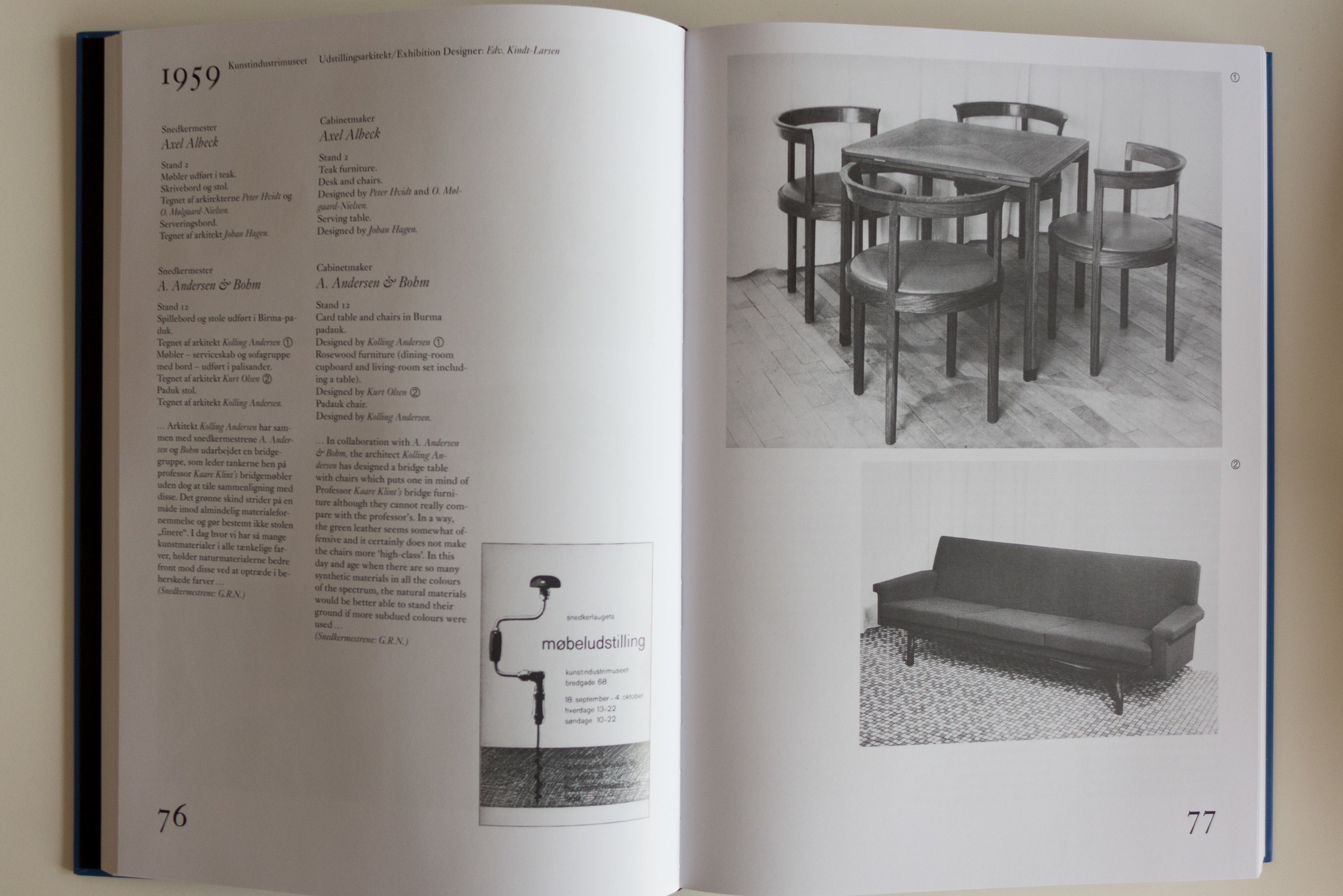Over the last month or so, posts here have focused on a number of chairs from the 20th century that are design classics and all, in different ways, examples of new styles or examples of experiments with new forms and new manufacturing techniques. However, the problem is, this gives an impression that every Danish chair represents a point in time on a rapid, inevitable and ongoing progression of design innovations.
But if you look at photographs of homes from the 20th century or even photographs from the annual exhibition of the Cabinetmakers' Guild Furniture exhibitions that were held from 1927 through to 1966 - where craftsmen were actually competing to produce the latest and the best - you see a good number of strangely old-fashioned chairs and much of the best modern furniture was produced in small quantities or, in some cases, made only when commissioned and many of the designs would have been considered expensive, even at the time, so well beyond the budget of an ordinary working family.
Of course, for offices and schools and factories - let alone for ordinary families in ordinary homes in new apartments in the city in the 1920s and 1930s and 1940s - and then on through the period of so-called classic Danish furniture in the 1950s and 1960s - Denmark actually had to produce ordinary chairs or, at least, chairs that were designed and made to be robust and affordable rather than being primarily award winning, memorable or collectable.
So part of the story of the development of modern design in Denmark is the story of designers trying to produce ordinary chairs that were well designed and well made.
One reason - perhaps the main reason - for the annual exhibition of the work of cabinetmakers was so that these craftsmen could show they could compete with the emerging furniture factories, so proposals from cabinetmakers were "submitted for both cheap and somewhat more expensive furniture" for the exhibition.
For the Cabinetmakers' Exhibition in 1929 Viggo Sten Møller and Hans Hansen designed furniture for a two-room apartment with a compact dining tables and chairs made by Adolf Jørgensen.
In 1932 Møller became the editor of the trade journal Nyt Tidsskrift for Kunstindustri and alongside technical articles he introduced pieces on colour schemes, lighting and textiles and from the architect Marinus Andersen he commissioned an article about furnishing a small apartment for a couple about to get married.
The cabinetmakers began to introduce a broader range of furniture so pieces specifically for children or in 1939 designs for a study for a student designed by Børge Mogensen and Aage Windeleff. In the exhibition in 1962 there was even a large kitchen designed Henning Jensen and Hanne and Torben Valeur that was made by Christensen & Larsen although it was clear that this would have been an exceptional and expensive project … so hardly a flat-pack job.
But it was not just cabinetmakers who were trying to improve the design of furniture that could be sold at a reasonable price. Around 1930, Magnus L Stephensen was asked to furnish two test apartments for a public housing scheme at Ryparken, designed by Povl Baumann, that was based on a budget that was realistic for a young working family but he found only one factory and one traditional workshop in the city who could provide furniture he considered good enough within that budget.








































